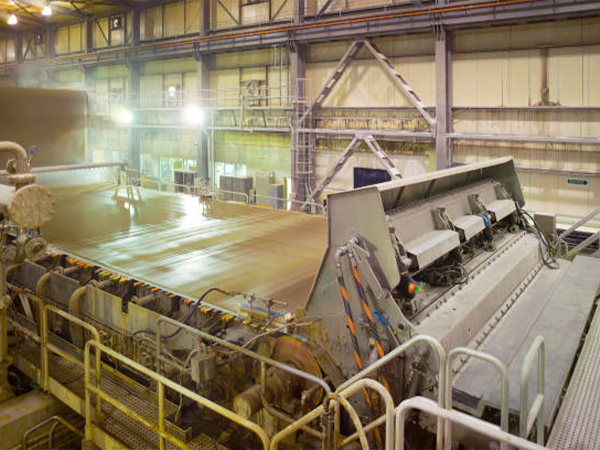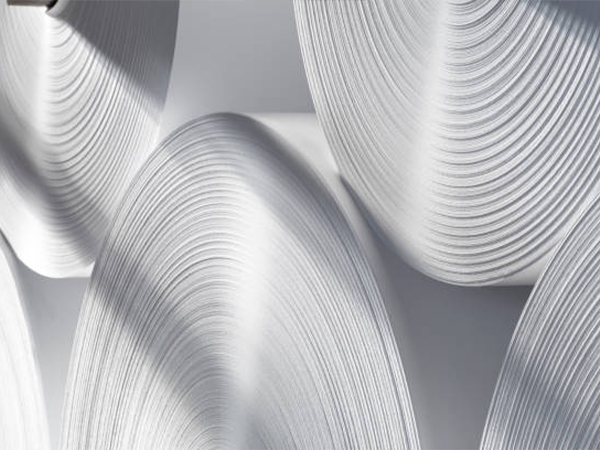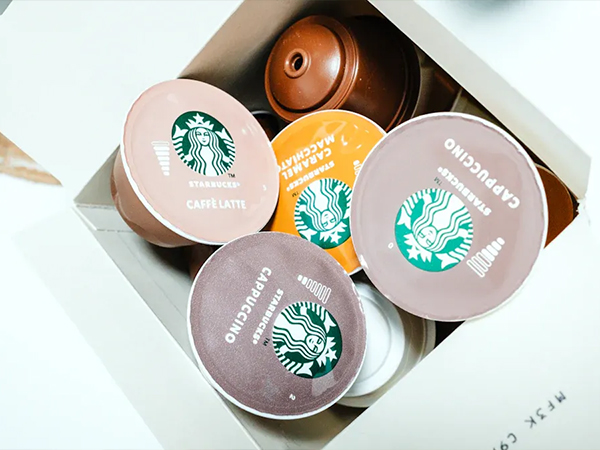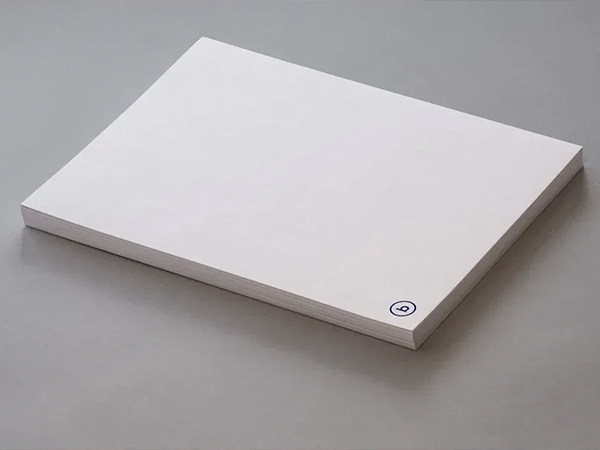
Wet strength and dry strength additives differ in how they enhance the durability of paper products under varying conditions. Wet strength additives boost moisture resistance, making tissue and packaging more durable for transport and hygiene needs. Dry strength additives increase structural integrity, crucial for specialty papers and printing. These distinctions matter as global production volumes continue to rise, with Asia Pacific leading growth.
- Wet strength additives dominate the market, accounting for 60% share, due to demand for water-resistant packaging and tissue.
Selecting the right paper strength additives directly impacts product performance, recyclability, and cost.
Key Takeaways
- Wet strength additives help paper stay strong and resist water damage, making them ideal for tissue, packaging, and medical papers exposed to moisture.
- Dry strength additives improve paper strength when dry, supporting printing, specialty papers, and recyclable packaging without affecting fiber recovery.
- Wet strength additives form permanent chemical bonds that resist water but can increase costs and reduce recyclability; dry strength additives use reversible bonds and are more cost-effective.
- Choosing the right additive depends on product use, cost, environmental impact, and regulatory rules to balance performance and sustainability.
- Combining wet and dry strength additives allows papermakers to create papers that perform well in both wet and dry conditions, meeting diverse industry needs.
Paper Strength Additives

Paper strength additives play a crucial role in the papermaking industry. Manufacturers use these chemicals to enhance the mechanical properties of paper, such as tensile strength, stiffness, and durability. By improving fibre-fibre joint strength and increasing network density, these additives allow papermakers to produce sheets that withstand demanding applications. Surface modification techniques, including Layer-by-Layer treatments, further boost interfacial adhesion and residual stresses, resulting in significant gains in specific stiffness and strength.
Note: Stronger fibre-fibre interactions help utilize the natural properties of cellulose fibers, leading to better performance and production efficiency.
Wet Strength Additives
Wet strength additives enable paper products to maintain integrity when exposed to moisture. These agents form covalent bonds with cellulose fibers and create crosslinked, water-resistant coatings. Their polymeric nature, water solubility, and cationic character allow them to self-crosslink and attach strongly to fibers. Wet-strength agents are essential for products like tissue, medical packaging, and labels that require durability in wet environments. The industry increasingly adopts bio-based wet-strength agents to balance performance with environmental sustainability.
Dry Strength Additives
Dry strength additives improve paper strength under normal dry conditions. These chemicals include cationic starch, polyacrylamide derivatives, carboxymethyl cellulose, and guar gum derivatives. Dry-strength additives increase the bonded area or strength per unit bonded area between fibers, enhancing internal bond and tensile strength. Papermakers focus on retention strategies, timing of addition, and charge neutralization to optimize results. These additives support efficient processing and help achieve strength goals for specialty papers and printing grades.
| Category | Definition | Typical Chemicals/Examples | Function/Role |
|---|---|---|---|
|
Dry-strength additives |
Chemicals that improve paper strength under normal dry conditions by enhancing compression strength, bursting strength, tensile breaking strength, and delamination resistance. |
Cationic starch, polyacrylamide derivatives, water-soluble polyelectrolytes, carboxymethyl cellulose, guar gum derivatives |
Increase bonded area or strength per unit bonded area between fibers, improving internal bond and tensile strength. |
|
Binders |
Substances that promote binding of pigment particles and the coating layer of paper. |
Styrene maleic anhydride copolymer, styrene-acrylate copolymer, styrene butadiene latex, dextrin, oxidized starch |
Bind filler to paper, stabilize coating layers, improve water retention and rheology. Co-binders (e.g., carboxymethyl cellulose, modified starch) are used alongside synthetic binders to reduce cost and improve performance. |
Paper strength additives fall into two main categories: wet strength and dry strength additives. Each type serves a distinct purpose, allowing papermakers to tailor products for specific performance requirements.
Wet Strength Additives
Purpose
Wet strength additives serve a critical function in papermaking. Manufacturers add these chemicals to paper pulp to increase resistance to water and preserve mechanical strength when exposed to moisture. These additives help maintain dimensional stability and prevent tearing or breaking in wet conditions. They also improve printability and handling, which enhances the overall quality of paper products. Wet strength additives enable the production of high-quality, moisture-resistant grades for demanding applications.
Wet strength additives allow tissue, packaging, and sanitary products to retain their integrity during use, transport, and storage.
Mechanism
Wet strength additives work by forming covalent bonds and crosslinking cellulose fibers. Synthetic resins such as polyamide-amine-epichlorohydrin (PAE) contain azetidinium groups that self-crosslink and co-crosslink with cellulose. This process creates hydrophobic bonds that restrict fiber swelling and increase water resistance. When combined with cationic starch, the additives form hydrogen bonds and further strengthen the fiber network. These chemical interactions result in improved wet tensile strength and reduced water absorption, which enhances the durability and water barrier properties of paper.
Types
Papermakers use several types of wet strength additives:
- Polyamide-amine-epichlorohydrin (PAE) resins: Most common for permanent wet strength.
- Polyethyleneimine (PEI): Used for specific grades requiring high wet strength.
- Glyoxalated polyacrylamide (GPAM): Applied for temporary wet strength, especially in disposable sanitary products.
- Bio-based wet strength agents: Increasingly adopted for sustainability.
Applications
Wet strength additives find use in a wide range of paper products:
- Tissue paper and paper towels: Require strength, softness, and water dispersibility.
- Liquid packaging: Needs moisture resistance for food and beverage containment.
- Napkins and sanitary products: Must withstand wet handling and disposal.
- Labels and medical packaging: Demand durability in moist environments.
Papermakers typically add wet strength agents to the thick stock during the wet end of the process. Some additives require thermal treatment or aging to achieve optimal performance. These chemicals also help balance charge on fines and fibers, increasing production efficiency and reducing energy consumption.
Dry Strength Additives
Purpose
Dry strength additives play a vital role in papermaking by enhancing the mechanical properties of paper under dry conditions. Their primary objectives include:
- Increasing the tensile strength and stiffness of paper.
- Improving fiber-to-fiber bonding by forming soft, gel-like polysaccharide layers at fiber joints.
- Mitigating the loss of strength and stiffness that often occurs during the drying process.
- Maintaining high elongation at break while increasing overall strength.
- Enabling the production of lighter, stronger paper products by allowing for reduced grammage without sacrificing performance.
These benefits help papermakers meet the demands of various applications, from specialty papers to packaging.
Mechanism
Dry strength additives interact with cellulose fibers through several molecular mechanisms:
- Hydrogen bonding and electrostatic (ionic) interactions serve as the main contributors to improved dry strength.
- Additives such as cationic starch attach to negatively charged fiber surfaces, increasing adsorption and binding strength.
- Polyvinyl alcohol forms strong hydrogen bonds with cellulose, acting as an effective binder.
- Chitosan, with its amino groups, enhances both dry and wet strength through hydrogen bonding and ionic attraction.
- The molecular weight of these polymers influences their efficiency, with higher molecular weights generally providing greater strength improvements.
These interactions reinforce the fiber network, resulting in paper with superior mechanical properties.
Types
| Dry Strength Additive Type | Examples | Source | Description/Notes |
|---|---|---|---|
|
Starch (cationic/anionic), Guar gum, Carrageenan |
Natural |
Derived from plants and marine algae; environmentally friendly and sustainable. |
|
|
Synthetic Polymers |
Polyacrylamide, Polyvinyl alcohol, Modified polyamines, Cellulase enzymes |
Synthetic |
Man-made polymers designed to enhance paper strength by forming hydrogen bonds with cellulose fibers. |
Manufacturers often select from a broad range of natural and synthetic polymers, including amphoteric, anionic, and cationic polyacrylamides, to tailor paper strength additives for specific performance needs.
Applications
Dry strength additives benefit a wide variety of paper grades and products. They are commonly used in:
- Tissue and towel grades, where improved tensile and burst strength are essential.
- Packaging paper and board, which require enhanced compression and stiffness.
- Graphic and specialty papers, benefiting from better surface and internal strength.
- Molded fiber products, where additives support both strength and cost-efficiency.
Papermakers apply these additives through stock addition, spraying, or at the size press. This flexibility allows for improved retention, dewatering, and machine runnability, supporting higher production speeds and reduced energy consumption.
Key Differences

Mechanism
Wet strength additives and dry strength additives operate through distinct chemical mechanisms. Wet strength additives, such as polyamide-amine-epichlorohydrin (PAE) resins, form covalent bonds with cellulose fibers. These bonds create a crosslinked network that resists water intrusion and maintains paper integrity even when wet. The crosslinking process typically occurs during drying at elevated temperatures, resulting in a permanent modification of the fiber structure.
Dry strength additives, including cationic starch and polyacrylamide derivatives, enhance fiber-to-fiber bonding primarily through hydrogen bonds and electrostatic interactions. These additives do not create irreversible crosslinks. Instead, they increase the bonded area between fibers, improving tensile and burst strength under dry conditions. The absence of permanent crosslinking allows for easier fiber separation during recycling.
Tip: Select wet strength additives for products that must withstand moisture. Choose dry strength additives when recyclability and dry performance are priorities.
Performance
Performance metrics for paper treated with wet strength and dry strength additives differ significantly, especially under wet conditions. The following table summarizes key laboratory and industrial findings:
| Condition | Tensile Strength Metric | Value / Range | Notes |
|---|---|---|---|
|
Untreated Paper (Dry Strength) |
Wet Tensile Strength Retention |
4-10% of dry tensile strength |
Paper loses about 90% of tensile strength when wet; tested in both MD and CD directions |
|
Wet Strength Treated Paper |
Wet Tensile Strength Retention |
20-35% of dry tensile strength |
Improvement depends on amount of wet strength additive (cationic PAE resin) |
|
Wet Strength Additive Dosage |
Optimal Consumption |
~5 kg/t or 180 dm³/h |
Balances mechanical performance and cost-effectiveness |
|
Testing Conditions |
Testing Methods |
ISO 1924 series (dry and wet tensile strength) |
Tests conducted in both laboratory and industrial settings (Natron-Hayat factory) |
|
Mechanism |
Bond Type |
Covalent bonds formed by wet strength agents |
Preserves mechanical properties in wet state |
Wet strength additives significantly increase wet tensile strength retention, raising it from 4-10% in untreated paper to 20-35%. Dry strength additives mainly improve dry tensile, burst, and compression strength, but offer limited benefit when the paper becomes wet.
Cost
Cost considerations play a crucial role in selecting between wet and dry strength additives. Wet strength additives, especially synthetic resins like PAE, often cost more per ton of paper produced. Their higher price reflects the complexity of their chemistry and the need for precise dosing to achieve optimal performance. However, the ability to maintain paper integrity in wet environments can justify the investment for specific applications.
Dry strength additives, such as cationic starch and polyacrylamide, generally offer a more cost-effective solution for improving dry mechanical properties. Papermakers can often use these additives at higher dosages without significantly increasing production costs. The choice between the two types depends on the required balance between performance and budget.
Note: Overdosing wet strength additives can lead to diminishing returns and increased costs. Optimal dosing ensures both performance and cost-effectiveness.
Application
Papermakers apply wet and dry strength additives at different stages and for different product requirements. Wet strength additives enter the process at the wet end, typically added to the thick stock before sheet formation. Some require thermal curing or aging to achieve full effectiveness. These additives suit products like tissue, liquid packaging, and medical papers that must resist moisture.
Dry strength additives offer greater flexibility in application. Manufacturers can add them to the stock, spray them onto the sheet, or apply them at the size press. These additives enhance the strength of printing papers, packaging boards, and specialty grades where dry performance is critical.
Environmental impact and recyclability also differ. Wet strength additives, especially synthetic polymers, create irreversible crosslinks that hinder fiber recovery during recycling. This reduced recyclability affects the sustainability of fiber-based packaging. Combining wet strength additives with agents like carboxymethyl cellulose can improve recyclability by reducing the amount of synthetic polymer required. Dry strength additives, which do not form permanent bonds, allow for easier repulping and have a lesser impact on recycling processes.
When to Use Each Type:
- Use wet strength additives for products exposed to moisture, such as tissue, napkins, and liquid packaging.
- Choose dry strength additives for applications where dry mechanical properties and recyclability matter, such as printing papers and recyclable packaging.
Pros and Cons
Wet Strength Additives
Wet strength additives offer several important benefits for papermakers and end users:
- These additives significantly improve product durability by helping paper maintain its integrity in wet or challenging environments.
- They enhance moisture resistance, which prevents paper from degrading when exposed to water or humidity.
- Wet strength additives support decorative appeal and printability, making them valuable for branded packaging and visually demanding applications.
- Many wet strength metalized papers use sustainable materials, providing an environmentally friendly option for packaging.
- The versatility of wet strength papers allows their use across a wide range of industries, ensuring adaptability and consistent performance.
Note: Wet strength additives enable tissue, packaging, and labels to perform reliably in conditions where ordinary paper would fail.
However, wet strength additives also present notable drawbacks:
- Polyamidoamine-epichlorohydrin (PAE) resins and similar chemicals have high costs, making them the most expensive chemical application in tissue production.
- These additives can negatively affect machine runnability by causing foaming, felt deposits, and reduced dewatering efficiency.
- Wet strength resins contribute to absorbable organic chlorine (AOX) in effluent, which includes compounds suspected of posing health and environmental risks.
- Regulatory frameworks, such as the EU Directive 2010/75/EU, have imposed stricter AOX limits, increasing compliance costs for producers.
- Cleaner, low-chloro-organic resins are available but tend to be more expensive and sometimes less efficient.
- Some older additives, like carboxymethylcellulose, present safety hazards during handling, such as dust and slippery floors.
- Balancing cost, regulatory compliance, environmental impact, and product quality remains a significant challenge.
Dry Strength Additives
Dry strength additives provide several key advantages for papermaking efficiency and product quality:
- Mills can use more recycled raw materials, as biobased dry strength additives perform well even with high conductivity and contaminants. This supports efficient production with recycled fibers and closed water loops.
- These additives help optimize chemical consumption. Mills can reduce the amount of dry strength resin and cut back on other chemicals, such as foam control and retention aids, leading to cost savings and improved process efficiency.
- Dry strength additives enhance product quality for sustainable packaging. They increase paper strength, enabling lightweight packaging without sacrificing physical specifications. This supports sustainability goals by allowing basis weight reduction.
Despite these benefits, dry strength additives have some limitations:
- They provide limited improvement in wet strength, making them unsuitable for products exposed to moisture.
- Some synthetic polymers may raise concerns about environmental impact if not managed properly.
- Achieving the right balance between strength, runnability, and cost requires careful selection and process control.
Tip: Papermakers should evaluate both performance needs and regulatory requirements when choosing between wet and dry strength additives.
Selection of Paper Strength Additives
Factors
Selecting the right strength additive depends on several critical factors. End use stands as the primary consideration. Tissue, packaging, and specialty papers each require different strength profiles. Required properties such as tensile strength, burst resistance, and wet durability guide the choice between wet and dry additives. Cost remains a major influence, as wet strength additives often carry a higher price tag due to their complex chemistry. Environmental impact also shapes decisions. Mills must consider the recyclability of the final product and the potential for additives to interfere with fiber recovery. Production efficiency, compatibility with existing processes, and the ability to use recycled fibers further affect additive selection.
Regulatory
Papermakers must navigate a complex landscape of regional and international regulations. The following table summarizes key standards and their impacts:
| Region | Regulatory Standards / Environmental Guidelines | Key Impacts and Requirements |
|---|---|---|
|
European Union |
REACH framework; Industrial Emissions Directive; Circular Economy Action Plan |
Chemical safety assessments; restrictions on certain additives (e.g., AKD); 20% water use reduction by 2030; 76% recyclability mandate by 2030; phase-out of non-compliant additives interfering with recycling |
|
United States |
FDA barrier requirements; California Proposition 65; EPA Effluent Guidelines |
Warning labels for acrylamide-containing products; reformulation costs; incentives to reduce wastewater pollutants; adoption of dry additives to meet effluent standards |
|
Japan |
Chemical Substances Control Law (CSCL) |
Ban on AKD-based dry strength agents in food-grade packaging; requirement for plant-based alternatives; delayed product launches due to retesting and certification |
|
China |
Dual Control policy (energy and carbon emission caps) |
Production cuts affecting supply; stricter environmental discharge limits; shift of production to less regulated regions like Vietnam |
|
Brazil |
ANVISA trials for medical-grade paper additives |
Lengthy 18-month trials; limited supplier approvals; oligopolistic pricing in niche markets |
|
India |
Production-Linked Incentive (PLI) scheme for specialty chemicals |
Incentivizes domestic manufacturing; reduces import reliance |
|
Global / Others |
UN Globally Harmonized System (GHS) for hazardous materials classification; Indonesia’s ban on single-use plastics |
Increased shipping costs for hazardous additives; increased demand for wet-strength paper due to plastic bans |
- EU mills using dry strength agents reduced freshwater consumption by up to 15% compared to wet-end additives.
- 41% of European recyclers rejected batches with non-compliant additives, forcing reformulations.
- California Proposition 65 reformulations cost suppliers an average of $2.8 million per product line.
- China’s Dual Control policy caused 30% production cuts in Shandong, impacting Southeast Asian supply chains.
Tips
Papermakers can optimize additive selection by understanding fiber surface charge and matching it to the right additive type. Cationic starch, anionic polyacrylamide, and polyelectrolyte complexes each interact differently with modified fibers. Saturation adsorption of these additives can boost tensile strength, z-directional strength, and bending stiffness without increasing paper density. Combining cationic starch with APAM or PECs often yields better results than using starch alone. In tissue production, balancing strength and softness is essential. Dry strength resins allow higher eucalyptus fiber content, improving softness while maintaining strength. The method of softener application also matters; spraying softeners on the wet web or dry sheet preserves strength better than wet end addition. Advanced measurement tools help mills fine-tune chemistries and troubleshoot issues, ensuring the right additive delivers the desired performance for each grade.
Wet and dry strength additives differ in their mechanisms, costs, and impacts on recyclability. Papermakers must select additives based on product requirements, regulatory standards, and operational goals. Additives such as those from BYK enhance coating performance and meet international food contact regulations, ensuring both quality and compliance.
| Feature/Aspect | Description/Benefit |
|---|---|
|
Improve wet and dry strength, retention, and machine runnability |
|
|
Regulatory compliance |
Products meet global standards, supporting safe and efficient production |
To make informed decisions, papermakers should:
- Use technical analysis to guide additive selection.
- Evaluate environmental impacts through life-cycle assessments.
- Balance economic feasibility with sustainability.
- Plan for regulatory changes and collaborate with stakeholders.
Careful additive selection supports product performance, cost efficiency, and environmental responsibility.
FAQ
What is the main difference between wet strength and dry strength additives?
Wet strength additives help paper resist breaking when wet. Dry strength additives improve paper’s strength when dry. Wet strength agents form permanent bonds, while dry strength agents rely on hydrogen bonding.
Can papermakers use both wet and dry strength additives together?
Yes, papermakers often combine both types to achieve balanced performance. This approach allows products to maintain strength in both wet and dry conditions.
Do wet strength additives affect paper recyclability?
Wet strength additives can make recycling more difficult. They create permanent bonds that resist repulping. Mills may need special processes to recycle wet strength papers.
Which industries use wet strength additives most frequently?
Industries producing tissue, paper towels, liquid packaging, and medical papers rely heavily on wet strength additives. These products must perform well when exposed to moisture.
How do papermakers choose the right strength additive?
Papermakers consider end use, required strength, cost, and environmental impact. They also review regulatory requirements and test different additives to find the best fit for each product.






